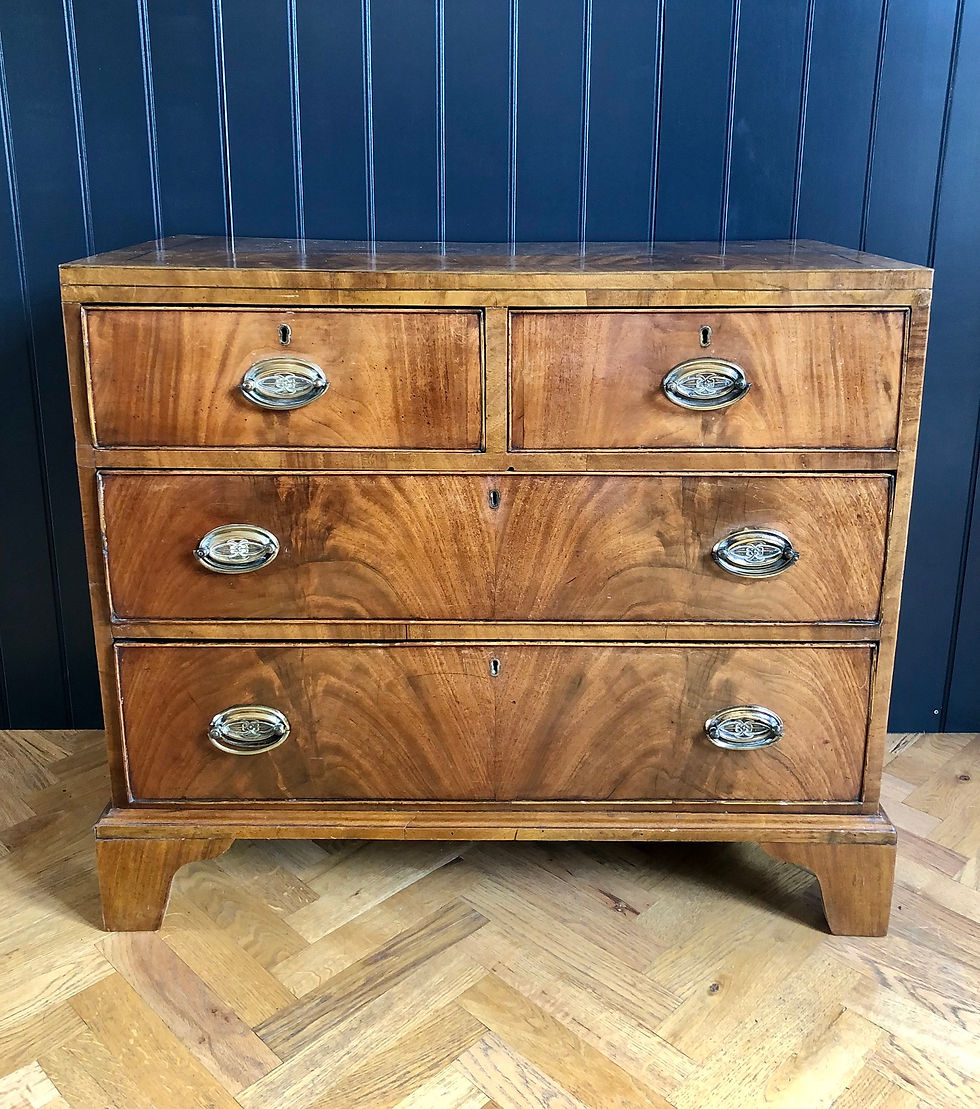10 Characteristics of English Georgian Furniture
- Louise Hodgins
- Jan 31, 2024
- 2 min read
English Georgian furniture refers to the furniture produced in England during the reigns of the four King Georges (George I to George IV) from 1714 to 1837. The Georgian period is divided into three parts: Early Georgian (1714–1760), Mid Georgian (1760–1790), and Late Georgian (1790–1837).
Georgian furniture is known for its elegance, simplicity, and a departure from the excessive ornamentation of the preceding Baroque period.
Here are 10 characteristics of English Georgian furniture:
Mahogany Wood: Georgian furniture is often associated with the use of mahogany wood. This tropical hardwood became widely available during the Georgian era and was favoured for its durability, rich colour, and straight grain.
Elegance and Symmetry: Georgian furniture is characterised by a sense of elegance and symmetry. Designs were more balanced and restrained compared to the elaborate styles of the Baroque period.
Chippendale Style: Named after the famous cabinetmaker Thomas Chippendale, the Chippendale style was prominent during the Mid Georgian period. Chippendale furniture featured intricate carving, often with motifs such as scrolls, foliage, and fretwork. Cabriole legs and ball-and-claw feet were common in Chippendale pieces.
Hepplewhite Style: The Hepplewhite style emerged in the Late Georgian period and was characterised by delicate and slender proportions. Hepplewhite furniture often featured tapered legs, shield-shaped chair backs, and delicate inlay or carving.
Sheraton Style: Another influential figure in Georgian furniture design was Thomas Sheraton. Sheraton furniture is known for its neoclassical influence, featuring straight lines, geometric shapes, and classical motifs such as urns and festoons. Sheraton pieces often had slender, tapered legs.
Adam Style: The Adam brothers, Robert and James, were architects and furniture designers who played a significant role in the Late Georgian period. Adam Style is characterised by a classical influence, with motifs like swags, urns, and classical columns. Furniture in the Adam Style was often painted or decorated with neoclassical themes.
Inlay and Marquetry: Georgian furniture often featured delicate inlay work and marquetry. This decorative technique involved the use of contrasting wood veneers to create intricate patterns and designs on the surface of the furniture.
Serpentine and Bow-Fronted Pieces: Some Georgian furniture, especially during the Mid and Late Georgian periods, featured serpentine or bow-fronted shapes. This design element added a touch of elegance to case pieces like chests of drawers and cabinets.
Neoclassical Influence: The Georgian era saw a revival of interest in classical art and design, particularly ancient Greek and Roman influences. This neoclassical influence is evident in the straight lines, geometric shapes, and classical motifs found in Georgian furniture.
Practicality: Georgian furniture was often designed with practicality in mind. Functional and comfortable pieces were favoured, reflecting a shift away from the more ostentatious and impractical styles of the Baroque period.
Overall, Georgian furniture is characterised by a sense of proportion, classical influences, and a departure from the excesses of earlier styles. The different phases of the Georgian period each contributed unique design elements to the overall evolution of English furniture during this time.



Comments